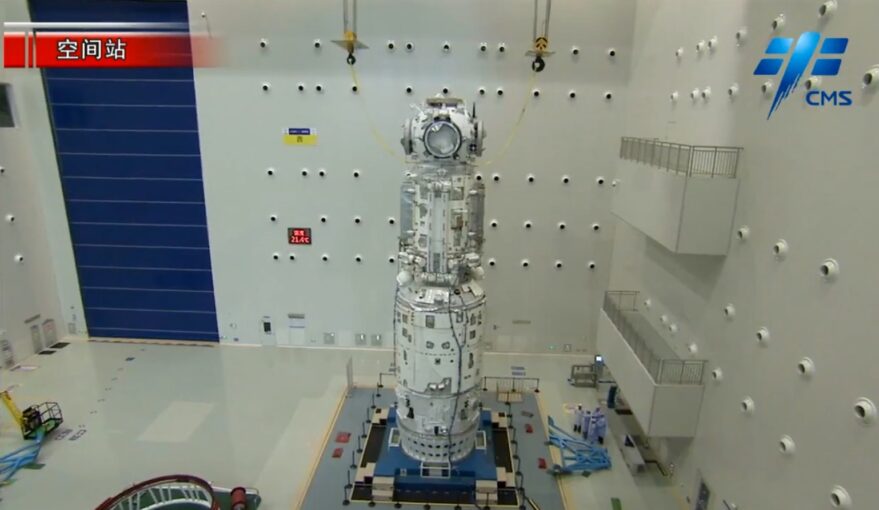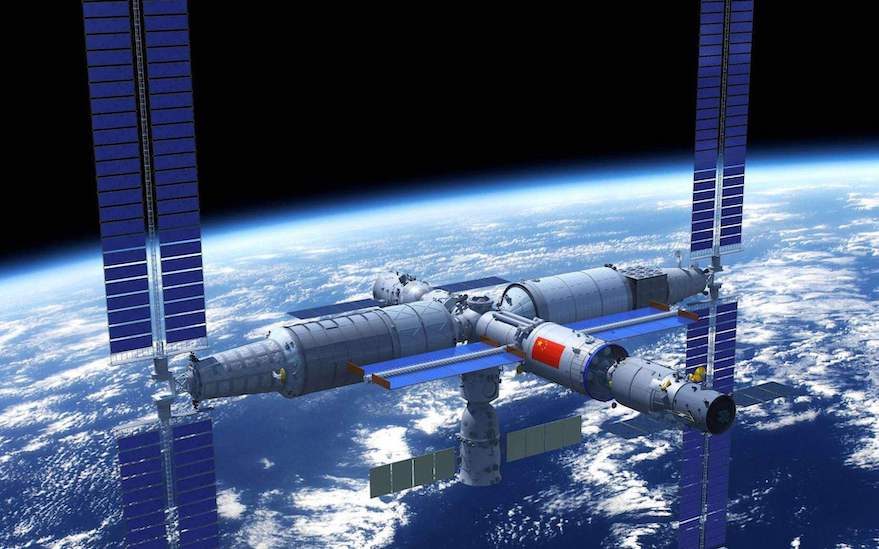Products You May Like
HELSINKI — China is set to launch the first module for its own space station next week after rolling out a Long March 5B rocket at Wenchang spaceport late Thursday.
The 53.7-meter-long Long March 5B is now expected to launch the 22-ton Tianhe space station core module around April 29, although authorities have not officially released a launch time.
The launch will mark the beginning of an intense construction phase for the three-module space station. China plans 11 major launches of modules, cargo and crewed spacecraft across 2021-22.
The Chinese space station was first envisioned in 1992 when China approved its Project 921 to develop human spaceflight capabilities. China sent its first astronaut, Yang Liwei, into orbit in October 2003.
The Long March 5B was transferred to the launch area early Friday local time. The rocket was transferred from a vertical integration building via a 2.7-kilometer track, with the transfer process taking about two and a half hours.
Encased in the payload fairing atop the rocket is the 16.6-meter-long, 4.2-meter-diameter Tianhe core module along with a docking hub. Tianhe and the Long March 5B arrived at Wenchang in February for assembly and integration.
Tianhe, meaning “harmony of the heavens”, is planned to be inserted directly into a low Earth orbit with an apogee of around 370 kilometers and inclined by 41 degrees.
The three-module, 66-metric-ton space station will host three astronauts for six month rotations. Planned experiments include international projects in the areas of astronomy, space medicine, space life science, biotechnology, microgravity fluid physics, microgravity combustion and space technologies.

The Tianhe module will provide regenerative life support and living space for three astronauts as well as propulsion to maintain the orbit of the entire complex.
If launch goes well Tianhe will be visited in May by the Tianzhou-2 spacecraft. Tianzhou-2 will launch via Long March 7 rocket from Wenchang and rendezvous and dock with Tianhe and transfer propellant to the space station module.
The crewed Shenzhou-12 will then send the first astronauts to Tianhe in June. The Shenzhou spacecraft and Long March 2F launcher arrived at the Jiuquan Satellite Launch Center in mid-April.
A Long March 2F rocket and Shenzhou spacecraft will also be on standby at all times at Jiuquan to perform emergency rescue missions to the space station, a senior space official stated in March.
China’s most recent crewed mission was the 2016 month-long Shenzhou-11 mission to Tiangong-2 space lab. The latter was deorbited in 2018, avoiding a repeat of the uncontrolled Tiangong-1 reentry scenario.
The Tianhe mission will be the second launch of the expendable, cryogenic Long March 5B. The first was launched in May 2020. The mission carried a prototype new-generation crewed spacecraft as a payload to simulate launch of the Tianhe module.
The launch of the Tianhe core module was delayed by the 2017 launch failure of the second Long March 5. The saw the postponement of the test launch of the Long March 5B variant for low Earth orbit launches while issues with the YF-77 liquid hydrogen-liquid oxygen engine for the core stage were isolated and remedied.
China has condensed the space station construction schedule into an intensive two-year period, maintaining an earlier target of completing the Chinese Space Station by the end of 2022.
The CSS will also be joined in orbit by the Xuntian optical module, a co-orbiting, Hubble-class space telescope. The space telescope will have a 2-meter-aperture comparable to Hubble but feature a field of view 300 times greater, allowing 40 percent of the sky to be surveyed across a decade.
Xuntian will be capable of docking with the CSS for maintenance and repairs. The space station itself could also be expanded from three to six modules.

